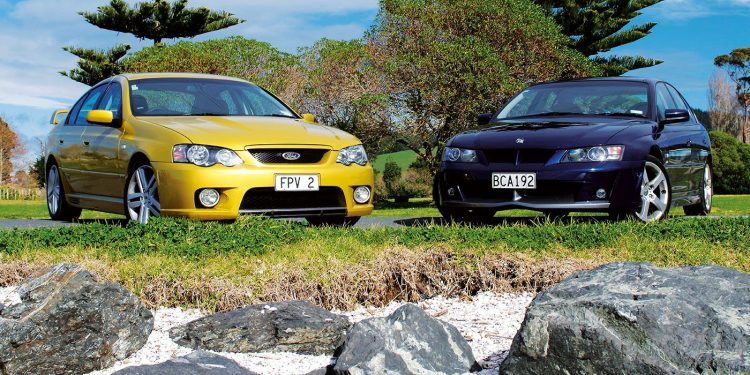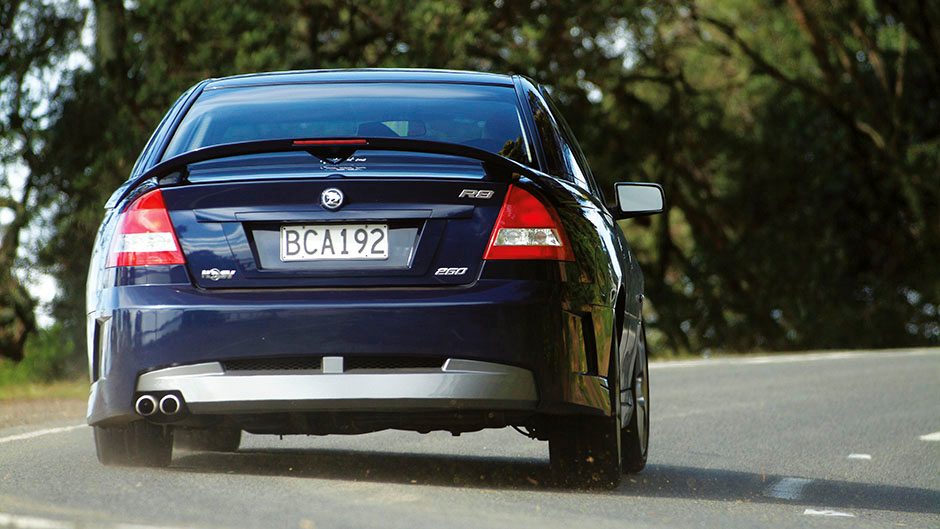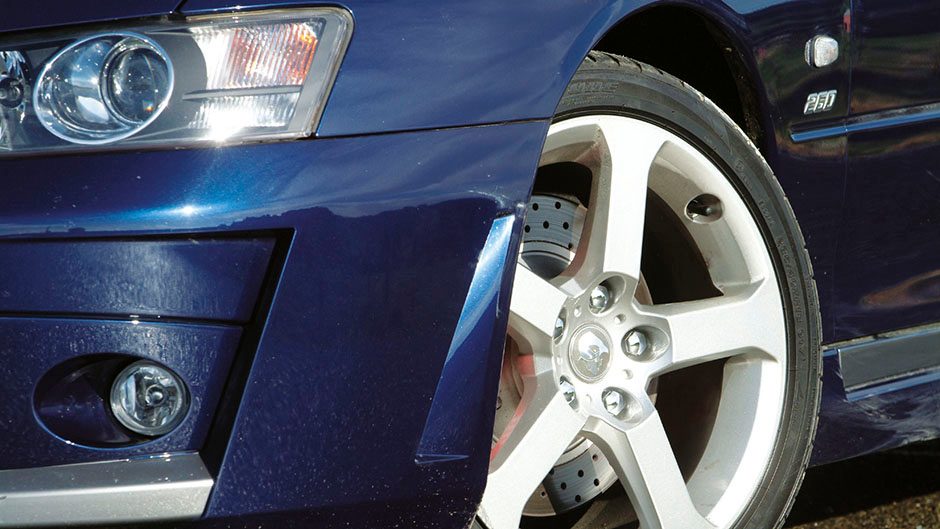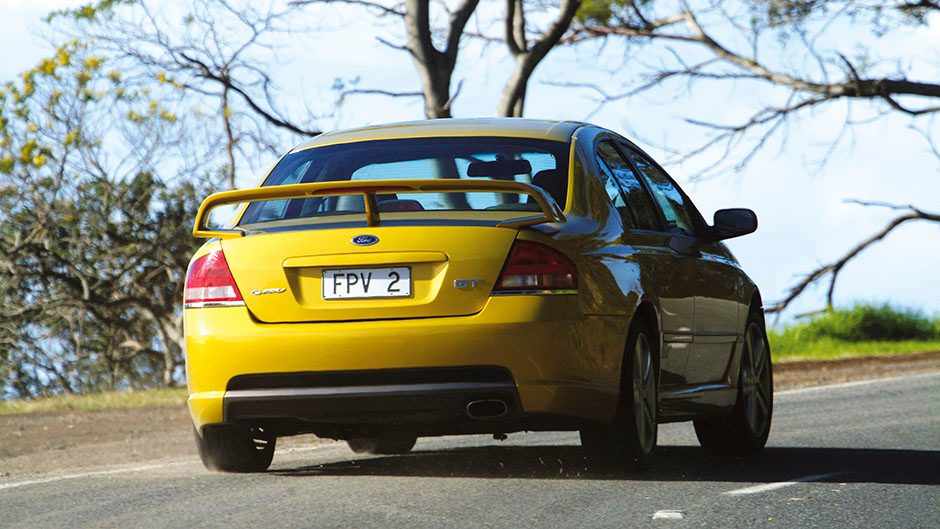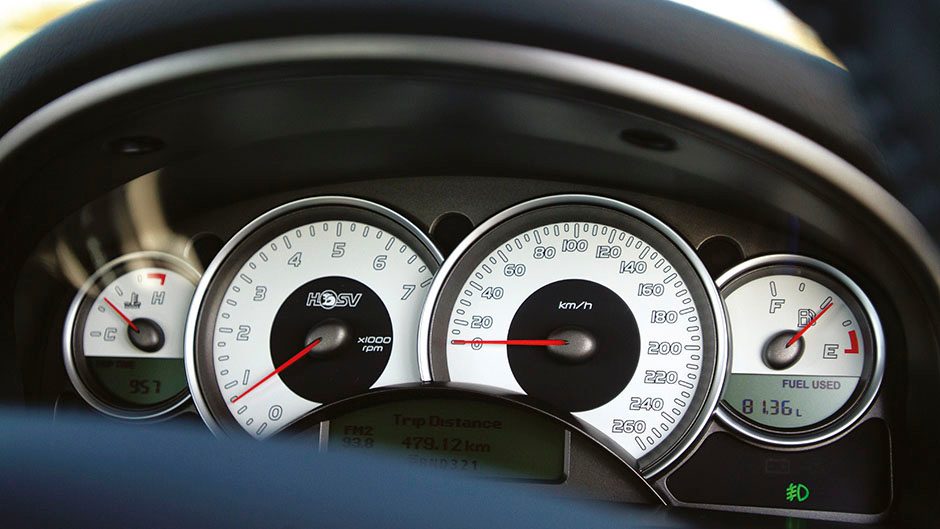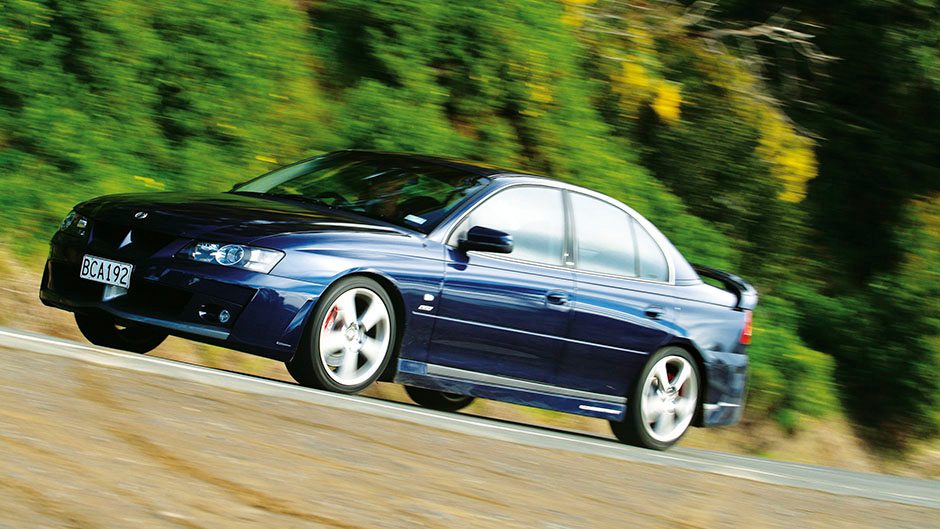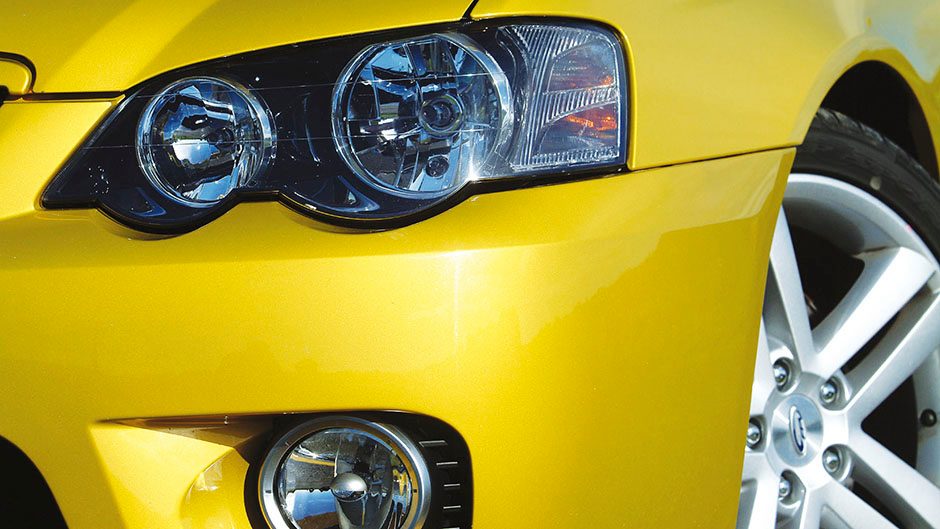2003 FPV GT vs HSV Clubsport R8 comparison
Words Paul Owen | Photos Adrian Payne
They say that where there’s smoke, there’s fire. In this instance you’ll find it in the combustion chambers of the high-output V8 engines that power the FPV GT and HSV Clubsport R8.
While George W. searches vainly in Iraq for Saddam and the so-called ‘smoking gun’, V8 enthusiasts can find four-wheeled equivalents of the latter in this country at selected FPV and HSV showrooms. The new Falcon-based GT from Ford Performance Vehicles takes aim at the most popular HSV, the Clubsport, and while neither Aussie V8 has the firepower to nuke a province full of infidels, they do have enough to turn their rear rubber into vapour and poke a bigger hole in the ozone layer.
While those concerned about the planet should look elsewhere for personal transport, this pair of specialised sports-V8s represents the pinnacle of performance for the Falcon and Commodore ranges. Actually the Clubbie is one step back from the HSV top tier of 300 kW models, but we chose it over those cars as it brings complete price parity to this shootout. Besides, the Clubsport R8 is arguably the finest model in the range, and at the same price of a Monaro CV8, almost certainly the best HSV/Holden choice for value for your dollar. Meanwhile, the FPV GT should need no introduction if you happened to read our March, 2003, issue. It was the hero car on a cover that proclaimed that Ford had at last produced an HSV-thumper. Was that announcement premature? We’re about to find out.
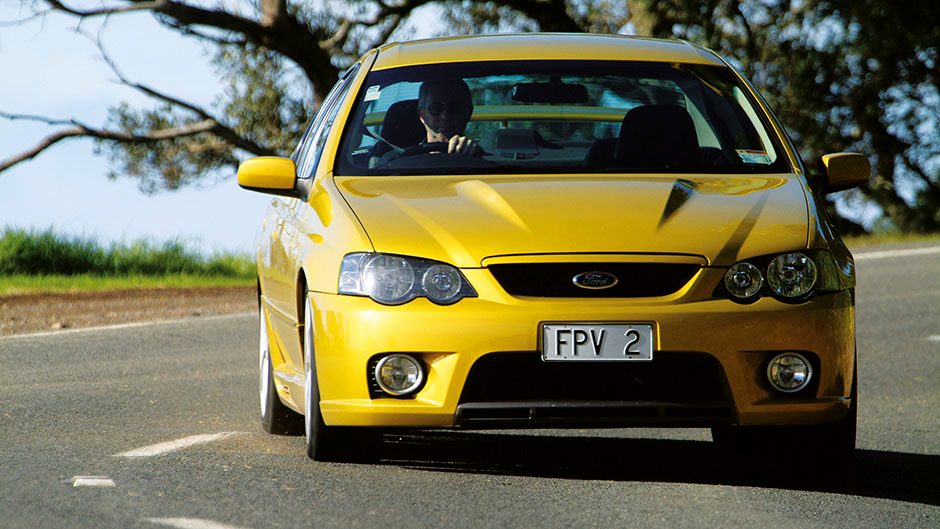
Price/Equipment:
This comparison will hopefully answer the $75,000 question: what’s the best Aussie V8 you can buy for that sum? The GT lands in our market wearing an identical price tag to the Clubsport R8 and, for the record, both cars cost roughly $13,000 more than their Falcon XR8/Commodore SS design bases. The extra wedge is worth paying if you desire a sharper-handling V8, and if it’s the HSV you’ve chosen, then everyone can see immediately that you’ve spent more to get something special. The GT, despite a purposeful rear wing and other body enhancements, looks too much like the XR8 to identify its owner straight away as a more discerning driver.
Inside, the GT is even more like the XR8. You stare at virtually the same interior, and the only enhancement is a mildly annoying silver ‘start’ button. At this price position the lack of climate control seems a glaring omission. These days you’ll find that feature in $40,000 family cars. Inside the HSV an extra instrument binnacle, housing an oil temperature gauge and a voltmeter, differentiates it from ordinary Commodore fare. On the outside, an absolutely outrageous body kit combines with humungous 19” alloy wheels to ensure that there’s no mistaking this car for a Holden. It’s the added attention to such details that puts the extra ‘plus’ on the HSV’s score. For otherwise this would be a battle of two price/equipment equals as the duo shares many features: side airbags to complement the frontal-impact pair, remote locking, traction control and ABS/EBD brake systems.
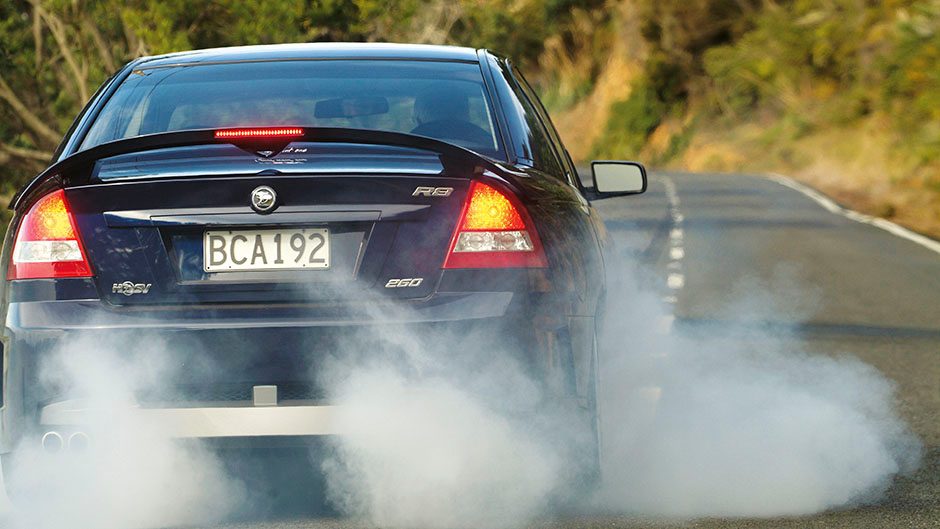
Design/Engineering
Are things getting weirder at HSV since ring-in designer, Ian Callum, left for Jaguar pastures? Will we remember the last Callum-shaped Clubsport – the VX version – as the prettiest? The latest VY Clubsport is as radical to view as any Bangle-Beemer, with its vertically-slotted bumpers and a front bib that looks like it’s already lost an argument with a telephone pole. Meanwhile, Ford errs on the side of conservatism with the FPV GT. Although the front bumper adds pizzazz (looking for all the world like an enlarged version of that of the Focus ST170) and the substantial rear wing an ambience of Bathurst in October, the side skirts are less aggressive-looking than the XR8’s. Meanwhile, the FPV’s 18” wheels are the same size as those worn by a Commodore SS.
However, it’s not the design that really defines the GT from the rest of the Falcon range: it’s the engineering. Different camshaft grinds from the XR8’s bang the 32 valves open further and longer, adding another 30 kW of power to the top end of the rev range. Hollow Mustang Cobra R cams and Aussie-made cast pistons, which raise the compression ratio to 10.5:1, result in the strongest normally aspirated V8 engine currently within Ford’s global inventory. Further enhancements result in reduced vibration and a greater urgency to rev out. A two-piece driveshaft damps out the vibes that afflict ordinary Falcons, and the crankshaft undergoes a special balancing process before FPV assembles each ‘Boss 290’ V8. The chassis is set up how John Bowe would have it. The most notable revision from the XR8 is the significantly stiffer front end – both in terms of spring rate and stabiliser-bar strength. Out back, the camber and toe of the rear wheels is more integrated with the front settings than in the XR8.
Over at HSV, the Clayton firm let Mark Skaife loose with a brief to turn these rough diamonds of cars into the Aussie equivalent of European sports-saloons. Skaife found extra grip for the chassis along with a more noticeable increase in ride quality, although the basic suspension format – trailing-arm independent rear end and Mac struts up front – lacks the sophistication of FPV’s control-blade IRS and double-wishbone front end. For higher technology, look no further than under the bonnet of the HSV or behind the spokes of its alloy wheels. The Clubbie scores a more race-worthy brake package than the GT, while the Corvette-sourced 5.7 litre V8 features all-alloy construction where the 5.4 litre Ford mill has a heavier cast-iron block. Processing the HSV’s power is a six-speed manual gearbox where the GT gets five forward ratios. With a claimed 260 kW at the crank to the Ford’s 290, the HSV might seem the underdog heading to the acceleration test arena, but lower mass and a better gear ratio spread could just make up for the deficit.
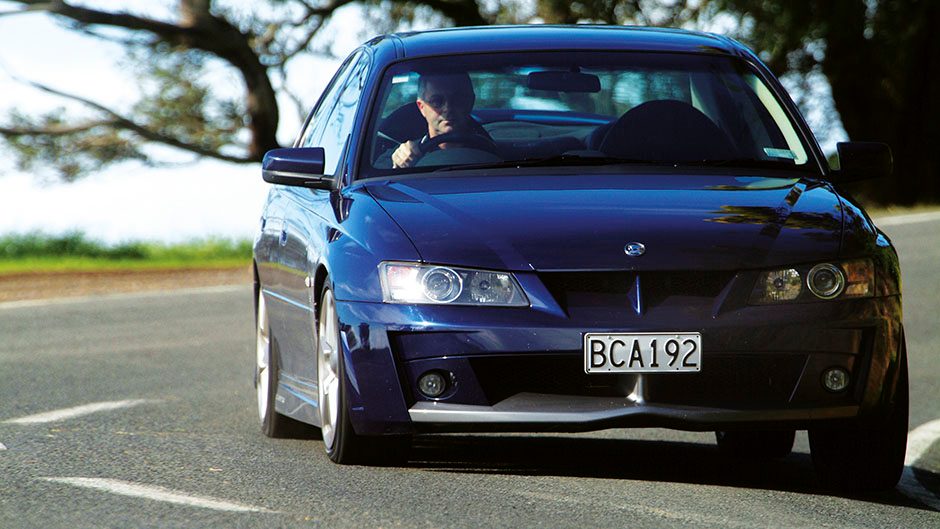
Performance
Sure enough, these two cars are equals in more ways than price. Although independent dyno tests have confirmed the 5.4 litre GT as Australia’s strongest V8, with 225 kW reaching the rear wheels compared with 222 in a 300 kW-spec HSV, it also earns the title of Australia’s heaviest V8 engine. That cast-iron block contributes a fair chunk of the extra 150 kg the GT carries compared with the R8, and the additional mass hands the 80-120 overtaking and 100-0 braking laurels to the HSV.
However, before Ford fans start sniffing petrol to forget their woes, let’s mention the 0-100 km/h stats. In the run to New Zealand’s legal speed limit from a standing start the extra torque of the FPV comes to the fore. Helped by the long-stroke architecture of the block, the GT makes 520 Nm of peak twisting force, 45 Nm more than the Clubsport. Given that torque rather than power is more of a factor when shifting inert lumps of mass, the GT’s 0.3-second 0-100 km/h advantage comes as no surprise.
The Cobra R cams really start ramming the fuel-air mixture through the GT’s cylinder heads as the tacho needle sweeps past 4000, bringing forth an extra surge that ends abruptly at 6000. If revs per minute matter, then the extended engine-speed spectrum of the HSV will be a powerful attraction. It’s 5.7 will rev out to 7000, highlighting its sports-coupé origins. Ford’s 5.4 first drew breath powering an SUV, a fact that becomes more obvious the harder you rev it. Sure sounds good doing it though: its throatier warble will have HSV owners green with envy. Any time you need to slow down in a hurry, the HSV is your preferred car. The R8 receives HSV’s ‘Premium’ brake package as standard equipment, the massive cross-drilled discs and four-piston calipers front and rear creating a 100-0 km/h stopping distance advantage of almost four metres. Any GT buyers seeking similar powers of arrest should take up FPV’s $4000 optional Brembo braking package.
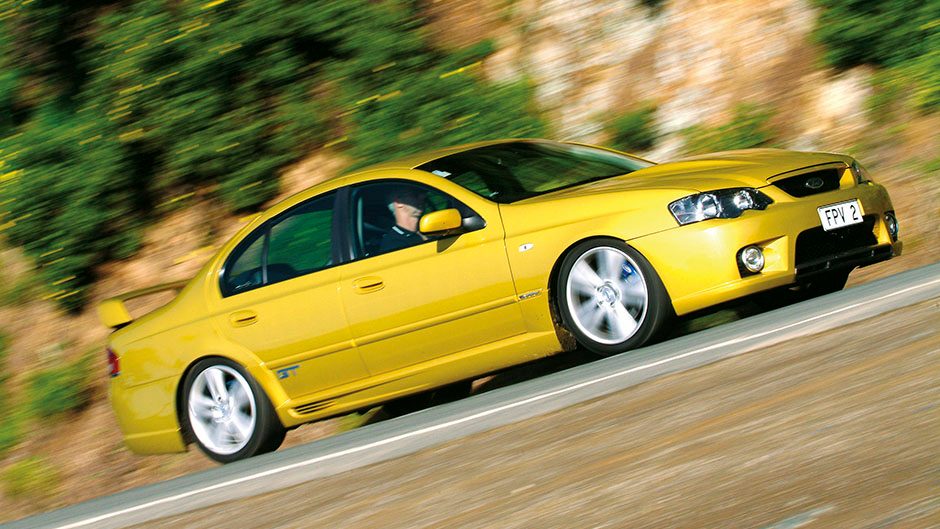
Driving Dynamics
Skaife did some fine work on the HSV chassis, but an artist can only do so much with the materials available. The Opel Omega platform underpinning Commodore-based models is fast approaching its use-by date, and we suspect the Y-series HSVs are about as sorted as this chassis will ever be. Not that there’s much wrong with the Clubsport’s maximum corner speed or its ability to equal the point-to-point driving times of the GT. It’s just that the FPV is less demanding of driver skill, more eager to change direction, and less prone to tram-lining and bump-steer.
Chucking the Clubbie in hard is hot and sweaty work compared with the lighter-steering, sharper-turning GT, and you need a firmer hand on the wheel to stop the front end being influenced by bumps and camber changes. Meanwhile, the 88 per cent increase in the torsional rigidity of the BA Falcon body allowed FPV to provide better ride quality in the GT. The spring rates may be on the firm side, but thanks to the compliance of the chosen damping, your mother-in-law won’t notice she’s riding in a hot sports-sedan. Although much improved in this regard over the VX version, the HSV can’t match the ride of the Ford, as its more flexible body demands stiffer suspension to keep it tracking straight and true through the twists and turns. Another place you feel that flex is through the wheel of the HSV. There’s more kickback through corrugated corners, and it’s more eager to slew sideways to seek a smoother path. Despite the more front-heavy static weight distribution, the GT always feels the better-balanced car.
Comfort/Convenience
Mixed bag, this section; hence, the equal scores. In an ideal world, the cockpit tailoring of the perfect Aussie V8 sports-saloon would contain the lower-mounted, more supportive seat of the HSV but the better wheel and pedal interfaces of the GT. Then we’d choose the shift quality and tactile appeal of the Tremec five-speed gearbox of the GT instead of the don’t-rush-me six-speed of the HSV. Forward of that lever would be the more informative and distinctive dash design of the HSV, complete with the Clubsport’s dual-zone climate control and six-disc CD audio system. The HSV has more to offer in terms of comfort and entertainment systems, but this advantage is cancelled out by the pampering ride of the GT and its lighter controls. Occupant and boot space of both cars is on a par.
| Model | 2003 FPV GT | Price | $75,000 |
| Engine | 5408cc, V8, EFI, 290kW/520Nm | Drivetrain | 5-speed manual, rear-wheel drive |
| Fuel Use | XL/100km | C02 Output | Xg/km |
| 0-100km/h | 5.80sec | Weight | Xkg |
| Model | 2003 HSV Clubsport R8 | Price | $75,000 |
| Engine | 5665cc, V8, EFI, 260kW/Nm | Drivetrain | 6-speed manual, rear-wheel drive |
| Fuel Use | XL/100km | C02 Output | Xg/km |
| 0-100km/h | 6.0sec | Weight | 1667kg |


